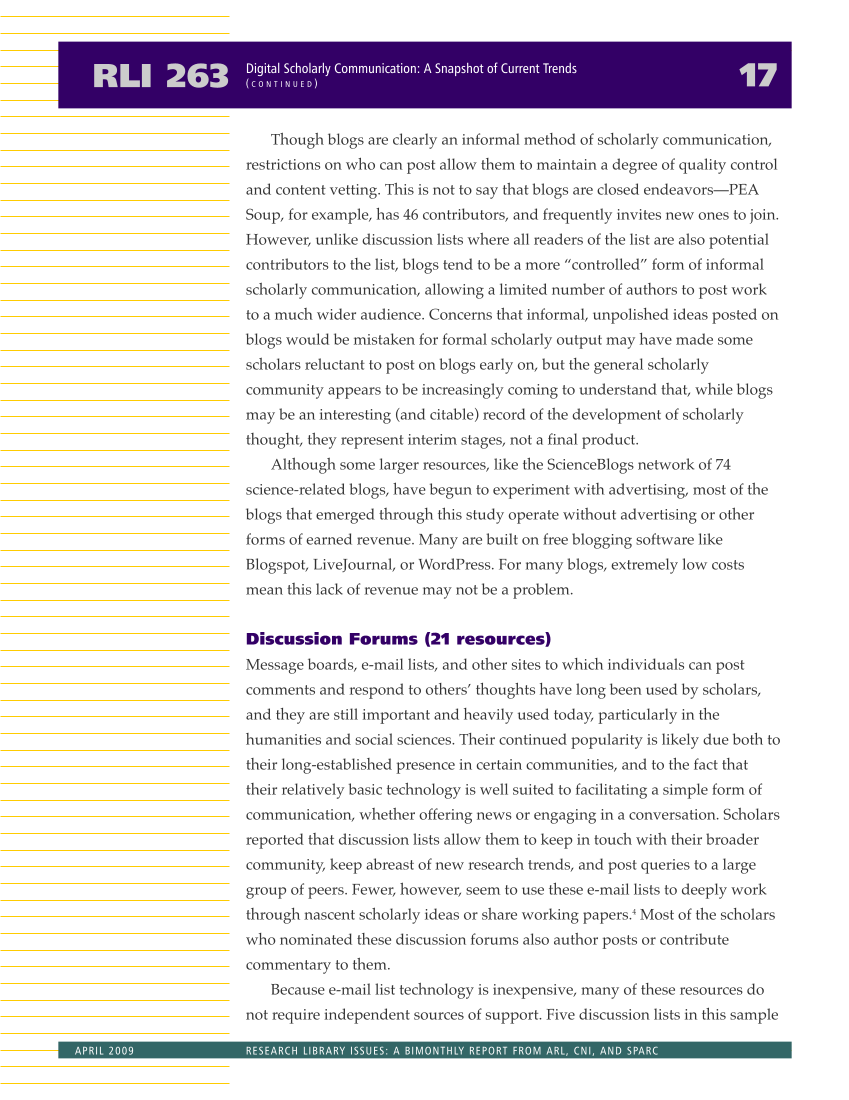Though blogs are clearly an informal method of scholarly communication, restrictions on who can post allow them to maintain a degree of quality control and content vetting. This is not to say that blogs are closed endeavors—PEA Soup, for example, has 46 contributors, and frequently invites new ones to join. However, unlike discussion lists where all readers of the list are also potential contributors to the list, blogs tend to be a more “controlled” form of informal scholarly communication, allowing a limited number of authors to post work to a much wider audience. Concerns that informal, unpolished ideas posted on blogs would be mistaken for formal scholarly output may have made some scholars reluctant to post on blogs early on, but the general scholarly community appears to be increasingly coming to understand that, while blogs may be an interesting (and citable) record of the development of scholarly thought, they represent interim stages, not a final product. Although some larger resources, like the ScienceBlogs network of 74 science-related blogs, have begun to experiment with advertising, most of the blogs that emerged through this study operate without advertising or other forms of earned revenue. Many are built on free blogging software like Blogspot, LiveJournal, or WordPress. For many blogs, extremely low costs mean this lack of revenue may not be a problem. Discussion Forums (21 resources) Message boards, e-mail lists, and other sites to which individuals can post comments and respond to others’ thoughts have long been used by scholars, and they are still important and heavily used today, particularly in the humanities and social sciences. Their continued popularity is likely due both to their long-established presence in certain communities, and to the fact that their relatively basic technology is well suited to facilitating a simple form of communication, whether offering news or engaging in a conversation. Scholars reported that discussion lists allow them to keep in touch with their broader community, keep abreast of new research trends, and post queries to a large group of peers. Fewer, however, seem to use these e-mail lists to deeply work through nascent scholarly ideas or share working papers.4 Most of the scholars who nominated these discussion forums also author posts or contribute commentary to them. Because e-mail list technology is inexpensive, many of these resources do not require independent sources of support. Five discussion lists in this sample RLI 263 17 Digital Scholarly Communication: A Snapshot of Current Trends ( C O N T I N U E D ) APRIL 2009 RESEARCH LIBRARY ISSUES: A BIMONTHLY REPORT FROM ARL, CNI, AND SPARC











































